Fiddle Leaf Fig Tree: Recognize and Treat Common Problems
The Ficus Lyrata, also known as the fiddle-leaf fig, is a popular indoor tree appreciated for its bold, architectural, evergreen foliage. But despite its robust appearance, this tropical plant can suffer from a range of environmental stresses, which are clearly visible on its large leaves. Brown spots, yellowing leaves, dry edges or suspicious holes are all warning signs of its health status.
In this article, we provide a complete guide to identifying the most common issues affecting Ficus lyrata, understanding their causes, and applying effective, expert-approved solutions for better plant care.
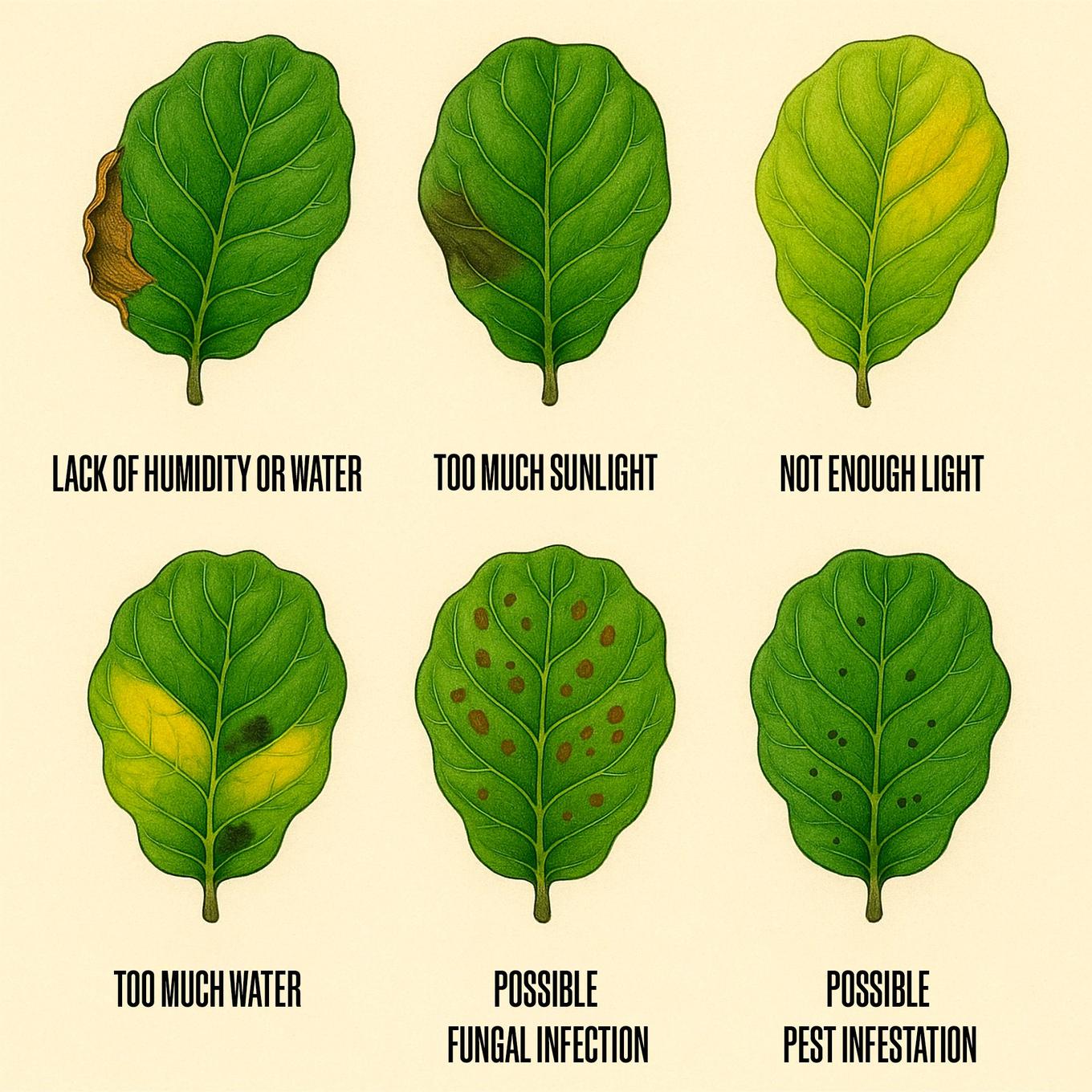
- Dry Leaf Edges: Your Ficus Needs More Water or Humidity
- Burned or Discolored Leaves: Too Much Direct Sunlight
- Pale Leaves, Slowed Growth: Lack of Light
- Yellowing Leaves, Dark Spots: Too Much Water (Overwatering)
- Irregular Spots: Likely Fungal Infestation
- Holes, Bites, Sticky Leaves: Pest Infestation
- L'Alchimie Botanique – Natural Elixirs for Houseplants
- Conclusion: Observe, Adjust, and Your Ficus Will Reward You
Dry Leaf Edges: Your Ficus Needs More Water or Humidity
When the leaves of Ficus lyrata show brown, dry, and crispy edges, often along with drooping foliage, this usually indicates underwatering or low ambient humidity.
Typical Symptoms
- Leaves that droop or appear limp
- Brown spots starting from the edges
- Premature dropping of lower leaves
Solutions
- Mist the leaves regularly with preferably non-calcareous water, like rainwater, to boost humidity
- Increase the frequency or amount of watering, especially in summer
- Check room temperature—whether in summer or winter, heat can dry out the air
- Give your plant a good lukewarm shower to rehydrate soil and foliage. Let it drain for 30 minutes to an hour before placing it back in the pot cover
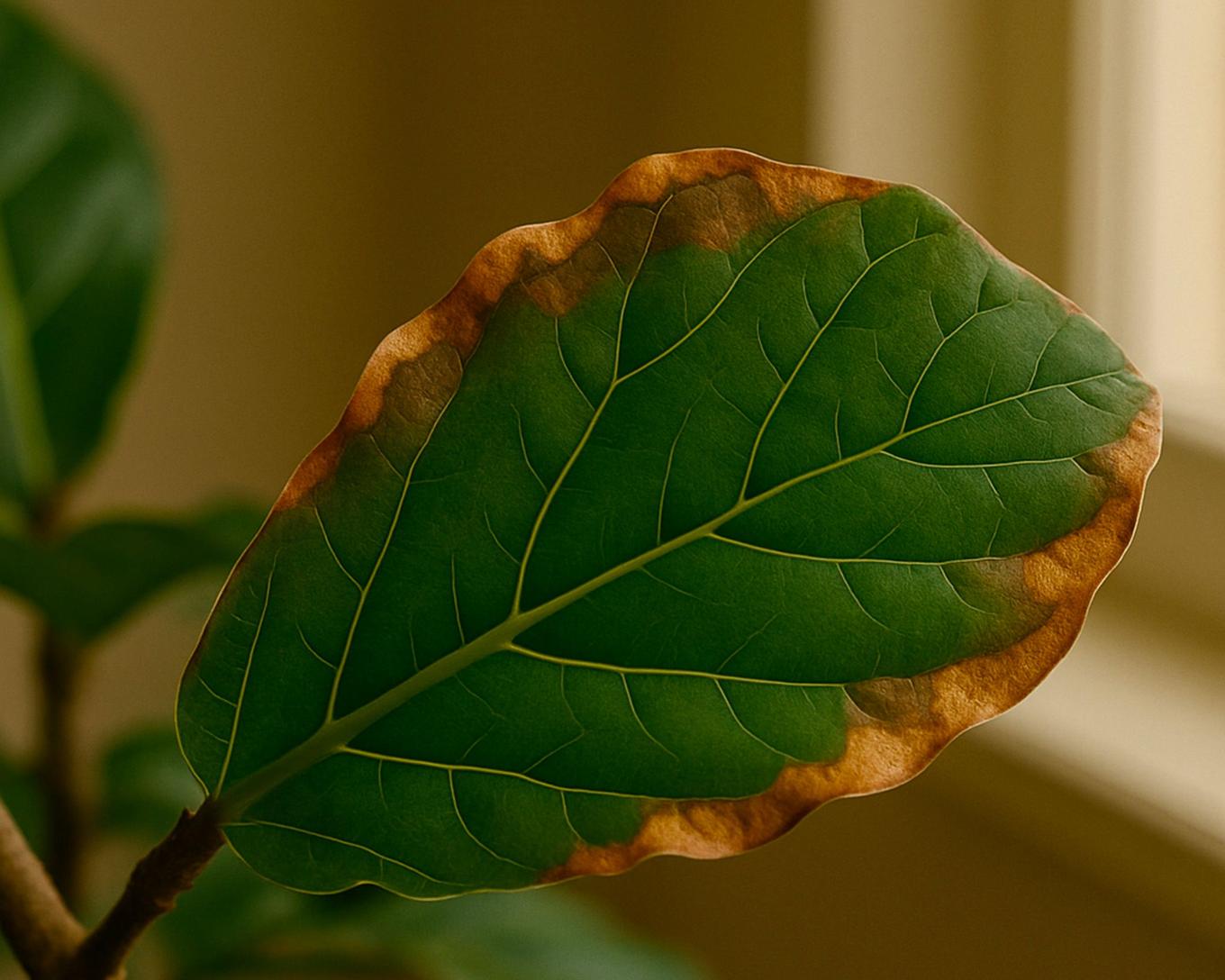
Burned or Discolored Leaves: Too Much Direct Sunlight
Although it needs plenty of light, Ficus Lyrata does not tolerate prolonged direct sun, especially in summer. This can lead to leaf burn.
Typical Symptoms
- Brown/black spots localized mainly on the upper parts of the leaves
- White or grayish discoloration
- Dry texture, dull or brittle leaves
Prevention
- Move it slightly away from south-facing windows without curtains
- Prefer bright indirect light or an east/west exposure with a sheer curtain
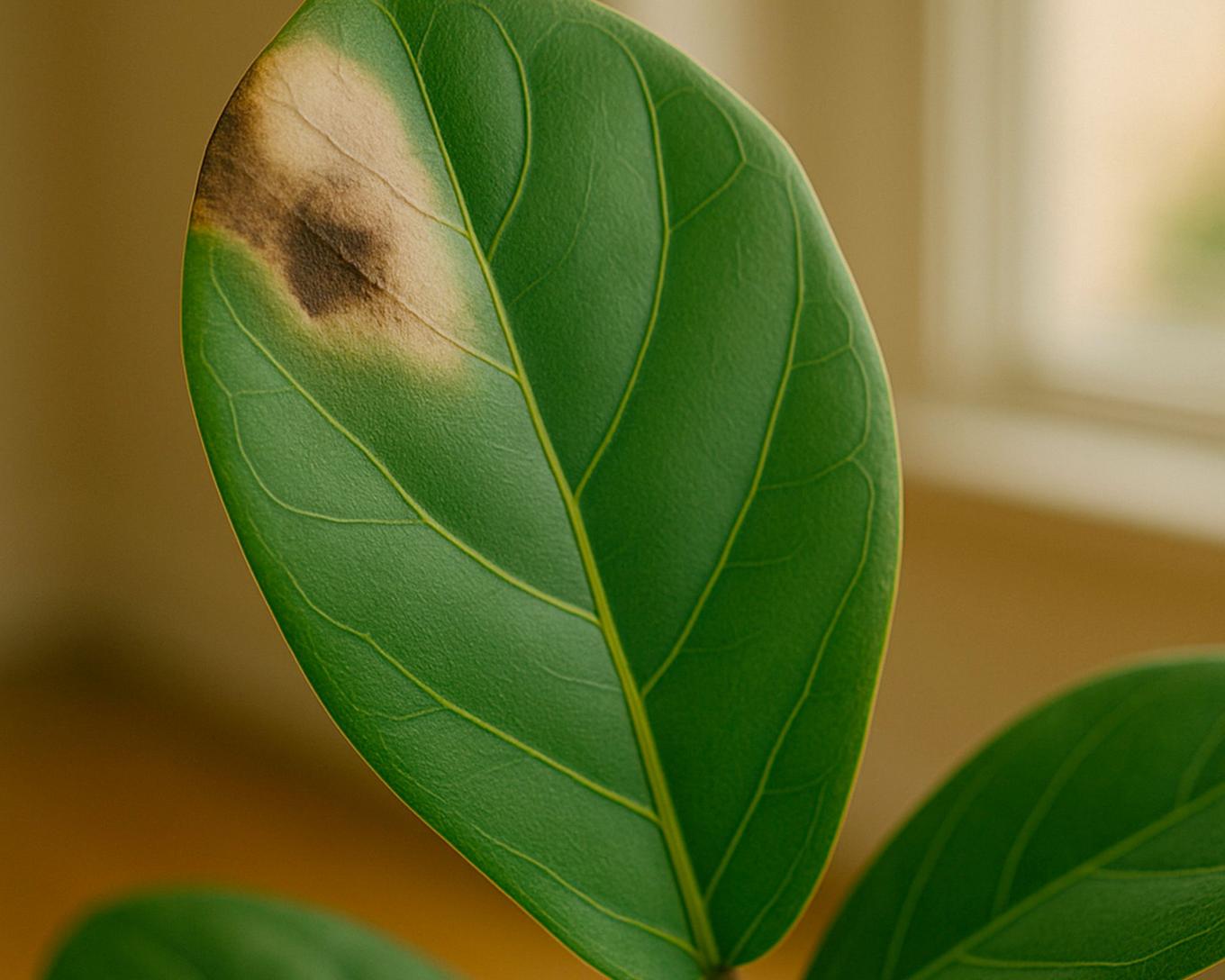
Pale Leaves, Slowed Growth: Lack of Light
Insufficient light is a common cause of gradual decline in Ficus Lyrata. Another cause of leaf discoloration and progressive fall could be exposure to cold drafts.
Typical Symptoms
- Gradually pale or yellowing leaves
- Abnormally stretched stems (etiolation)
- Smaller new leaves
- Lower leaf drop
Solutions
- Place the plant near a strong natural light source, without prolonged direct exposure
- Consider using a grow light in winter
- Adjust watering schedule: less light = less water needed
- Check if the plant has been exposed to a draft—if so, relocate it
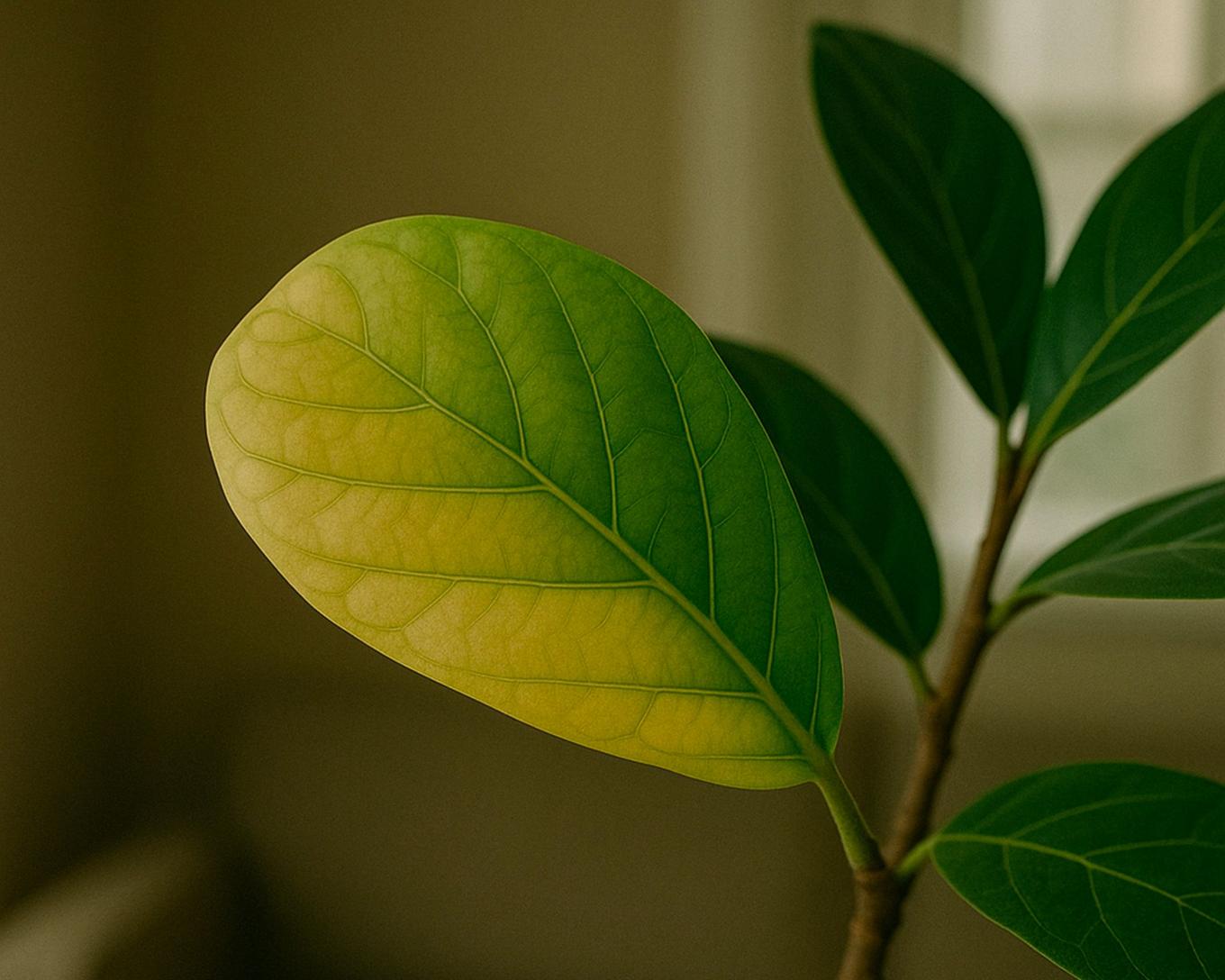
Yellowing Leaves, Dark Spots: Too Much Water (Overwatering)
Overwatering is one of the most frequent issues, especially when the substrate is poorly drained or water stagnates at the bottom of the cachepot.
Typical Symptoms
- Leaves turning yellow, then soft and dark
- Dark brown or black spots near the center of the leaves
- Sudden and significant leaf drop, often with a musty smell (rotting roots)
Solutions
- Check for standing water at the bottom of the cachepot and remove it to avoid root rot. You can add clay pebbles to elevate the root ball
- Let the soil surface dry before watering again
- Inspect the root system if needed. If roots are soft and black, trim them, repot, and adjust watering
- Check soil aeration and drainage. Use a stick to poke holes gently without damaging roots
- Reduce watering frequency and volume, especially in winter
- Improve indirect light exposure
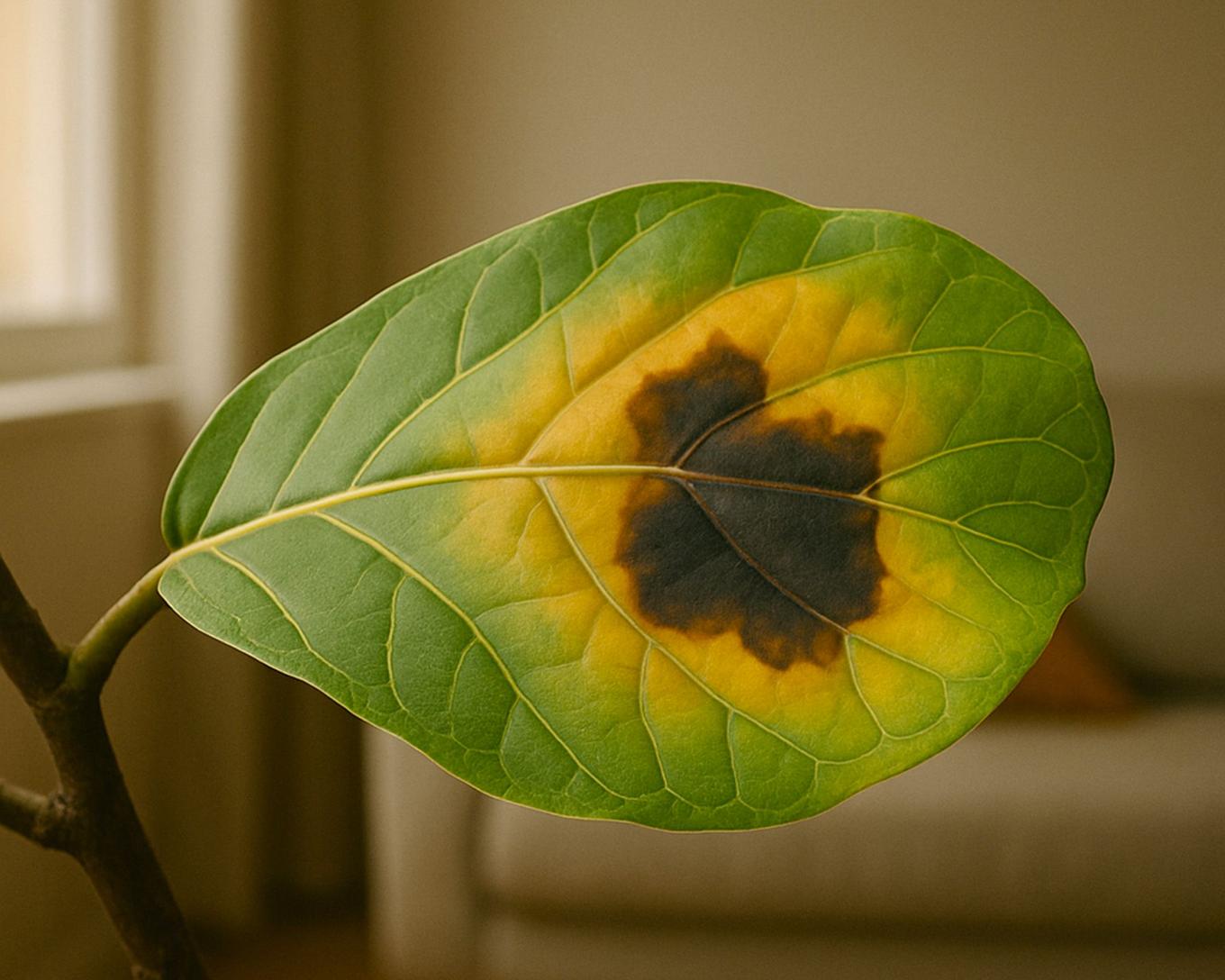
Irregular Spots: Likely Fungal Infestation
Fungi often appear due to excess humidity or poor ventilation. They manifest as well-defined spots that spread over time.
Typical Symptoms
- Small brown/black circular spots with yellow halos
- Expanding or irregular spots
- Local leaf drying around the lesions
- Sometimes powdery or fuzzy texture
Solutions
- Treat with Neem oil, like our Super Neem Oil solution.
- Check your watering routine. Inspect root health if needed
- Aerate the soil using a stick (carefully avoid damaging roots)
- Improve lighting and airflow
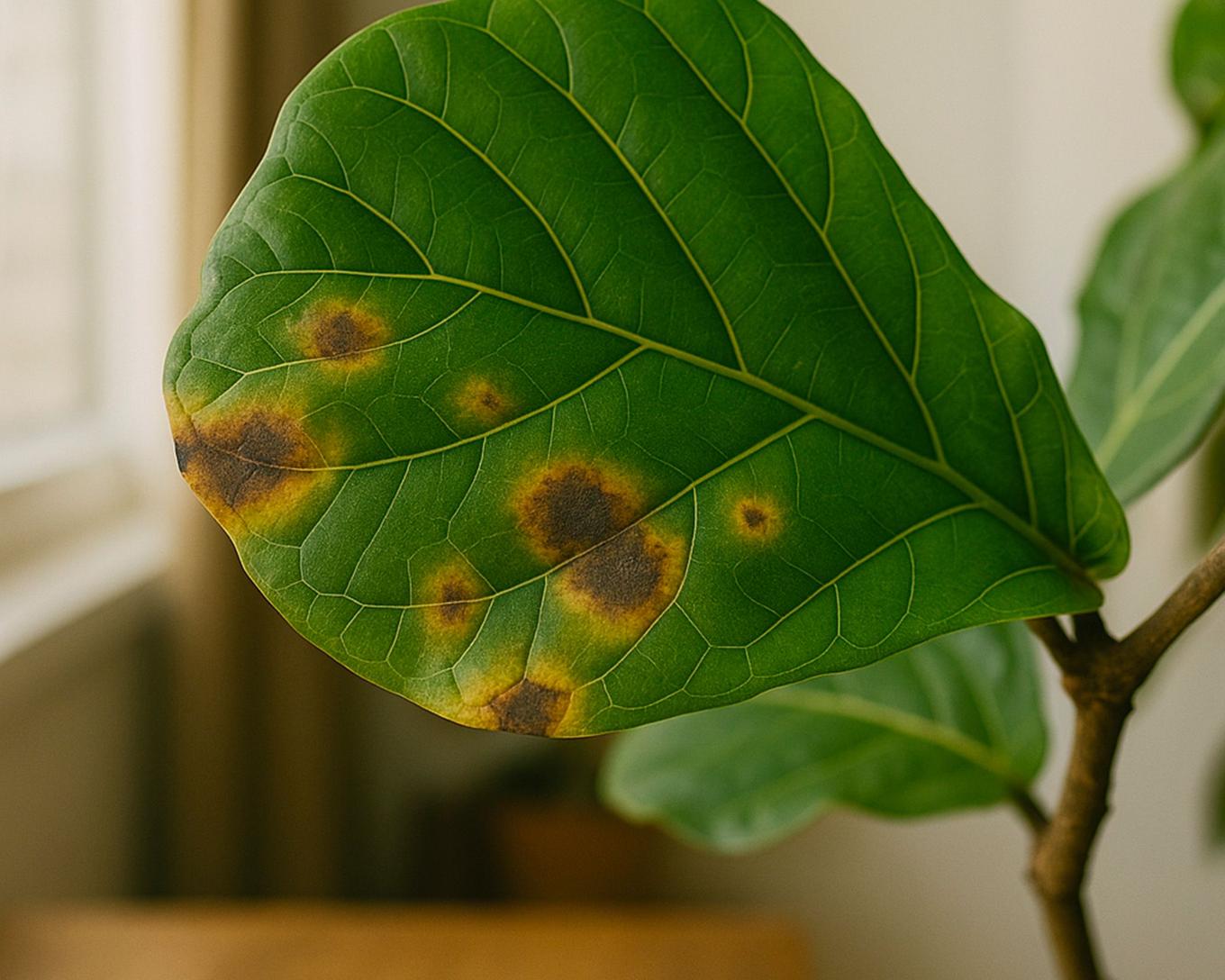
Holes, Bites, Sticky Leaves: Pest Infestation
Insects like thrips, mealybugs, aphids, or mites may attack your indoor plant, leaving clear marks.
Typical Symptoms
- Holes or bite marks
- Tiny black spots (droppings or stings)
- Presence of white dots, webs, or visible bugs
- Deformed, curled, or sticky leaves (honeydew)
Solutions
- Remove any insects with a soft wipe
- Treat with a natural insecticide based on neem oil, like our Super Neem Oil solution.
- Clean the leaves once or twice a month using our L'Original – Natural Black Soap
- Mist the foliage regularly to increase humidity and deter mites
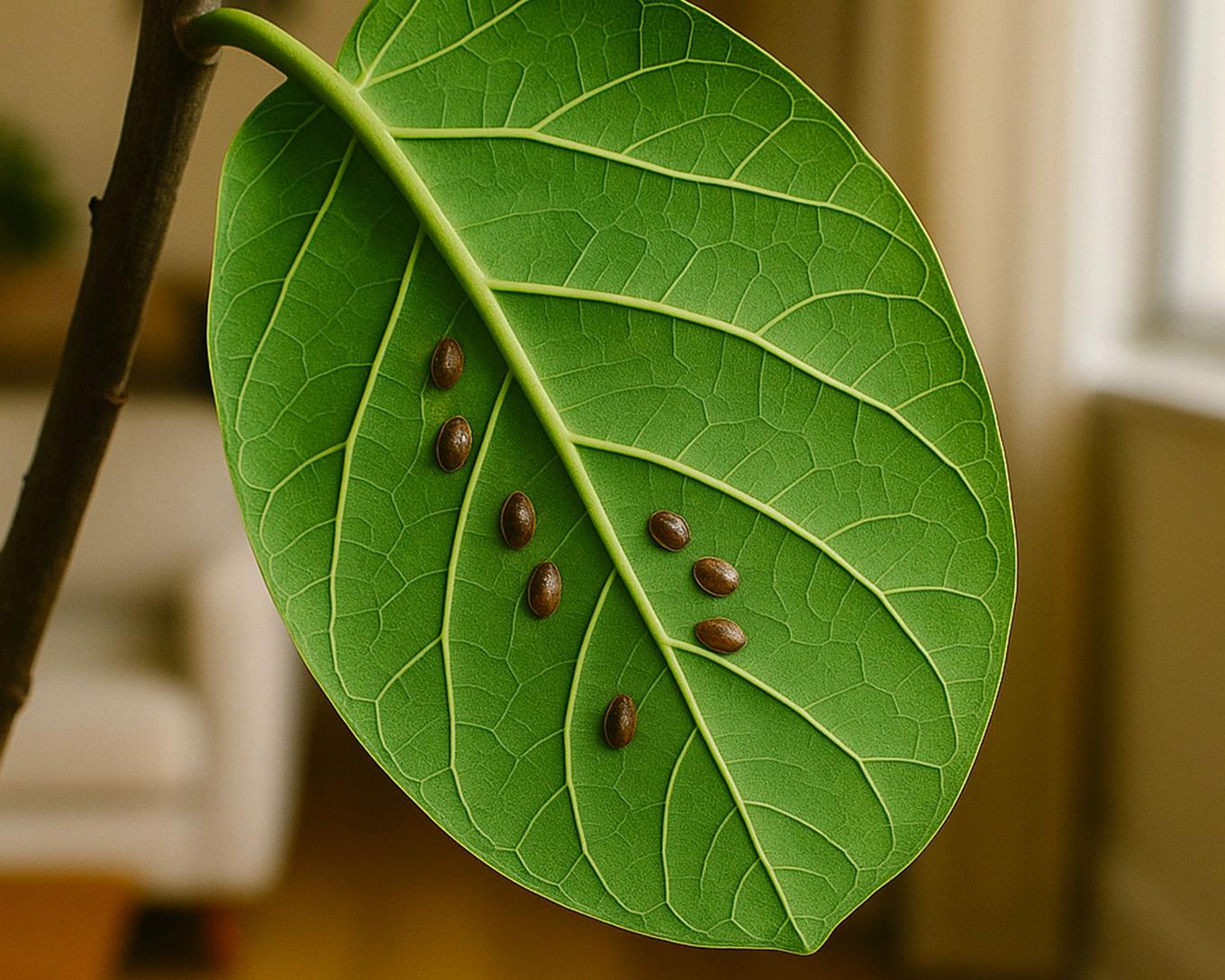
L'Alchimie Botanique – Natural Elixirs for Houseplants
Our premium plant care products are designed to nourish and heal a wide variety of indoor and outdoor plants. Discover our nutrient-rich foliar spray Brume Magique, our natural neem oil insecticide Super Neem Oil, and our gentle black soap-based cleaner L'Original – Natural Black Soap. These essentials, crafted in-house and produced locally, contain only the best ingredients.
Conclusion: Observe, Adjust, and Your Ficus Will Reward You
The Ficus lyrata is a sensitive but expressive houseplant—its leaves communicate clearly. By paying attention to its signals, you can react quickly and adjust your care practices.
Keep in mind:
- A good visual diagnosis is the key to effective treatment
- Balance of light, humidity, and watering is essential
- Regular maintenance (misting, leaf cleaning) prevents many issues
Feel free to save the image above as a reference to help recognize symptoms as they arise.
Shop Your Fiddle Leaf Fig Now
- Dry Leaf Edges: Your Ficus Needs More Water or Humidity
- Burned or Discolored Leaves: Too Much Direct Sunlight
- Pale Leaves, Slowed Growth: Lack of Light
- Yellowing Leaves, Dark Spots: Too Much Water (Overwatering)
- Irregular Spots: Likely Fungal Infestation
- Holes, Bites, Sticky Leaves: Pest Infestation
- L'Alchimie Botanique – Natural Elixirs for Houseplants
- Conclusion: Observe, Adjust, and Your Ficus Will Reward You







